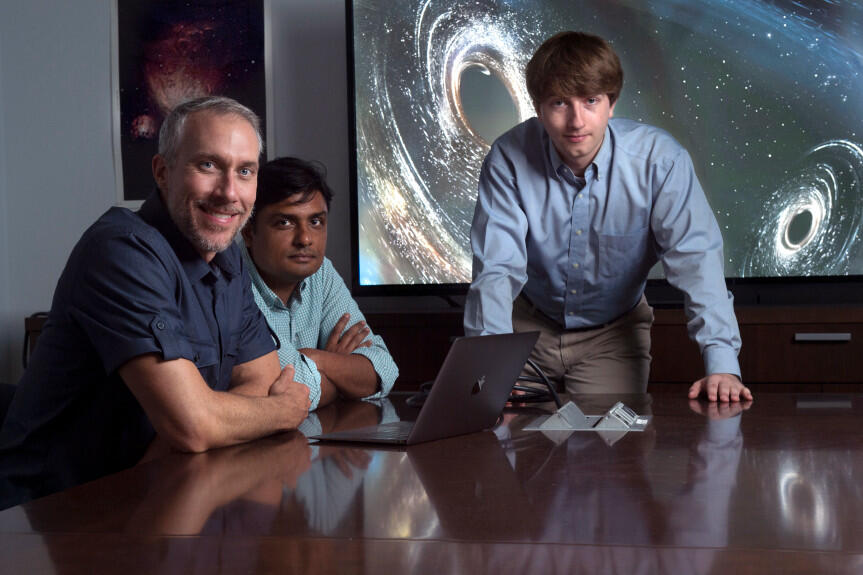Astronomers from UC Irvine have concluded that as many as 100 million black holes exist in our galaxy – a tally far more than previously believed and shocking even to the three researchers.
The findings, while surprising, don’t figure to affect life on earth or offer any immediate change in thinking about how the universe was formed and continues to evolve.
“It’s not like we need to go out and buy black hole insurance soon; not like we’re in danger of being sucked into a black hole any more than we were before,” said James Bullock, UCI’s chairman and professor of physics and astronomy and a researcher on the project.
“There are wonderless giant objects lurking out there,” Bullock said of black holes. “It’s just amazing that the universe was created out of things like this.”
The trio’s discovery grows out of the 2015 detection of evidence showing that two black holes, each the size of 30 suns, collided to form a single one some 1.3 billion years ago. In response to that groundbreaking news — which confirmed a key part of Einstein’s theory of relativity — the three UCI astronomers launched their study to determine how many black holes there are in the Milky Way.
In Monday interviews, Bullock, Manoj Kaplinghat, a physics and astronomy professor, and Oliver Elbert, who in July earned a Ph.D. from UCI, said they couldn’t even venture guesses on how many black holes existed.
The three co-authored a research paper on their findings that appears in the current issue of Monthly Notices of the Royal Astronomical Society.
For more than 18 months, the trio researched existing data about galaxies and stars, and crunched mathematical formulas, creating their cosmic inventory.
“It was an amazing exercise we were able to do, given what we know and what we don’t know, to come up with a number that was pretty accurate,” Bullock said.
A black hole is a star that has burnt off all of its fuel and collapsed. The gravity in a black hole typically becomes so strong that light can’t escape, rendering the space where the star once existed invisible.
In addition to counting our galaxy’s black holes, the trio set out to shed light on the elusive phenomenon of black holes colliding. The collision tracked in 2015 was the first time the phenomenon had been proven.
Of the 100 million black holes, Bullock, Elbert and Kaplinghat determined that 10 million are each the size of 50 suns. Some could collide in the near future.
“Right now, we know these black hole mergers are occurring in some broad swath of the sky, but not with much precision,” Bullock said. “There’s hope we’ll be able to triangulate their positions in the sky (and) begin to figure out what galaxy they’re merging in.” In the next decade or so, Elbert said, astronomers should figure out the answer.
“It’s definitely something I will be keeping my eye on, as we get more information coming in from future detection,” he said. “I plan on coming back to this, revisiting some of our predictions.”
Said Bullock: “The fun thing about research is when you find out one answer, it always opens up three or four other questions.”
Source: http://bit.ly/2ujYVY0











